 Image search results - "hie" Image search results - "hie" |

The Sanno Matsuri Festival is one of Japan's Big Three Festivals and one of Tokyo's Big Three Festivals held in mid-June during several days. The main highlight is the Jinko-sai Procession held every two years. The 600-meter long procession consists of about 500 people parading through central Tokyo near the National Diet, Imperial Palace, Tokyo Station, and Ginza. It includes three portable shrines, carriages, and flower floats. Various events are also held at Hie Shrine which holds the festival. Jinko-sai Procession left Hie Shrine at 8 am on June 11, 2004. Before noon, they approach the Imperial Palace. 山王まつり神幸祭
|
|

Sanno torii gate and the West entrance. Escalator on the right. This torii style is unique to Hie Shrines. The shrine is nearest to Tameike-Sanno Station on the Ginza and Nanboku subway lines. 山王鳥居
|
|

The Jinko-sai Procession passes in front of the Imperial Palace.
|
|

Sanno torii gate 山王鳥居
|
|

For a procession this large and grand, the crowd of spectators was extremely sparse. Good for photographers like me, but it was strange.
|
|

Sanno torii gate 山王鳥居
|
|
|
|

Hie Shrine's Sanno Matsuri Jinko-sai Procession in front of Imperial Palace.
|
|

Shinmon Gate 神門
|
|
|

Shinmon Gate 神門
|
|

One of the three portable shrines.
|
|

Shinmon Gate 神門
|
|

The original procession included many high floats. However, due to overhead power lines and overpasses, such floats cannot be included.
|
|

Sacred Monkey sculpture (Shin'enzo) holding a real banana. The monkey is Hie Shrine's messenger believed to bring marital harmony and children. 神猿像
|
|
|
|

Hie Jinja Shrine
|
|

Omiko Shrine maidens
|
|

Straw ring and Hie Jinja Shrine's Shaden Worship Hall. 社殿
|
|

Flower float, Sanno Matsuri
|
|
|
|

Inside Hie Jinja Shrine's Shaden Worship Hall. 社殿
|
|
|
|
|

Rest stop near Sakashita-mon Gate at the Imperial Palace.
|
|
|
|
|

Portable shrines
|
|
|

Shishimai Lion heads
|
|

Shrine maidens dance in front of the three portable shrines near Sakashita-mon Gate.
|
|
|
|

Storehouse for Sanno Festival floats
|
|
|
|

Storehouse for Sanno Festival floats
|
|
|
|
|
|
|

During this break period, the shrine priest and other representatives enter the Imperial Palace to pray for the peace, happiness, and prosperity of the Imperial family. Hie Shrine is the only shrine in Japan bestowed with this privilege.
|
|

Inari Sando torii gates 稲荷参道
|
|
|
|

Inari Sando torii gates are donated by individuals and companies for business prosperity. 稲荷参道
|
|

Some entertainment.
|
|

Inari Sando torii gates 稲荷参道
|
|
|
|

Sanno torii gate leading to the Omotesando path to the shrine. 山王鳥居
|
|
|
|
|
|
|

The procession passes by Tatsumi Turret as it leaves the Imperial Palace.
|
|

The Takayama Festival is held twice a year, during April 14-15 and Oct. 9-10. The spring festival is held by Hieda Shrine and it is called Sanno Matsuri. The festival features twelve ornate "yatai" floats which are displayed and pulled along the streets. In a large plaza, katakuri puppets perform on a few of the floats. The festival is also dramatic at night with a float procession. The Takayama Festival procession in spring starts at Hieda Shrine. Photo shows a banner reading "Hieda Jinja." 祭行列
|
|
|
|

Hie Shrine hall. The shrine is on Shiroyama Hill. 日枝神社On Dec. 1, 2016 (JST), Takayama Matsuri Festival was inscribed as a UNESCO Intangible Cultural Heritage of Humanity as one of 33 "Yama, Hoko, and Yatai float festivals in Japan."
|
|
|

The portable shrine (mikoshi) passes through Hie Shrine's torii to join the procession. 神輿
|
|
|
|
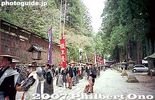
Shrine officials in the procession.
|
|

A mikoshi passes by Tatsumi Turret of the Imperial Palace durng the Sanno Matsuri Jinko-sai.
|
|
|
|
|
|
|

Shrine maidens
|
|
|
|

Mikoshi
|
|
|
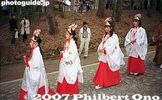
Shrine maidens
|
|

Road to Tokyo Station.
|
|

Shrine maidens
|
|

Crossing the street.
|
|
|
|
|
|

All the auto traffic and urban noise robbed the dignity of the solemn procession.
|
|
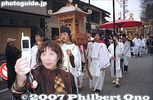
A middle-aged woman uses her camera phone to photograph herself. "I was here!"
|
|

Crossing the street near Maru-biru Building. They proceeded to Tokyo Station, Kyobashi, Nihonbashi, Shimbashi, and Ginza before returning to Hie Shrine at 5:30 pm.
|
|
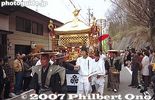
Portable shrine 神輿
|
|

Map of Jinko-sai Route.
|
|

Portable shrine 神輿
|
|

On the next day on June 12, 2004, was Miya-iri or portable shrines entering Hie Shrine. Led by this cart of festival musicians. 山王まつり宮入り
|
|

Shrine priest
|
|
|
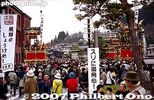
Large crowd gather to watch the karakuri puppets perform on the ornate floats. Sign says "Watch out for pickpockets."
|
|
|
|

Large crowd gather to watch the karakuri puppets perform on the ornate floats.
|
|

Children dressed as tekomai, Sanno Festival.
|
|
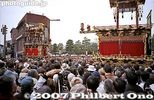
Only four of the 12 floats have karakuri puppets which perform. Takayama Matsuri, Gifu
|
|

Parish members reach the shrine.
|
|

The karakuri puppets first appeared on the Takayama Matsuri floats in the 18th century. They were handcrafted by artisans in Kyoto.
|
|

Parish members wait for the portable shrines to arrive. The paper lanterns are written with the names of the parish.
|
|

Japan has three basic types of karakuri puppets based on the region: Kyoto, Nagoya, and Kanto (Tokyo area). The Takayama karakuri are the Nagoya-type.
|
|
|
|

The puppets come out on a plank sticking out of the float and perform in a mini play with various stunts.
|
|

A mikoshi arrives at Hie Shrine.
|
|

Ryuujintai Karakuri 龍神台からくり
|
|

They pass through the ring.
|
|

Sanbasou Karakuri 三番叟からくり
|
|

In front of the shrine, the priest blesses the mikoshi portable shrine.
|
|

Sanbasou Karakuri 三番叟からくり
|
|

The portable shrines came one after another.
|
|
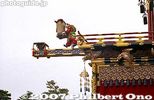
Ryuujintai Karakuri 龍神台からくり
|
|
|
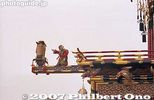
Ryuujintai Karakuri 龍神台からくり
|
|
|
|
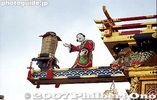
Ryuujintai Karakuri, Takayama Festival, Gifu 龍神台からくり
|
|
|

The karakuri perfom one float at a time.
|
|
|
|
|
|

Ryuujintai Karakuri 龍神台からくり
|
|
|
|
|
|
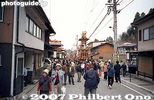
Street lined with floats.
|
|

Quite a spectacle.
|
|

Floats are displayed on the street. Takayama Matsuri, Gifu
|
|
|
|

Hie Shrine Sanno Matsuri
|
|
|
|
|
|
|
|

People linger in the shrine after all the mikoshi had arrived.
|
|
|

On the next day June 13, 2004, a Daidengaku troupe performed dances. 大田楽
|
|

Superb embroidery
|
|

It was semi-traditional and semi-modern.
|
|
|
|
|
|
|
|
|
|
|
|
|
|
|
|
|
|
|
|

Storehouse for a float. 屋台蔵
|
|
|

Held on April 14, the night procession is the festival's major highlight. 夜まつり曳行
|
|
|
|

The floats are lit and paraded on the streets.
|
|
|
|
|
|
|
|

On Nakahashi Bridge.
|
|
|
|
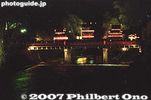
The floats cross Nakahashi Bridge.
|
|

Kentosai Sacred Dance
|
|
|

Shrine maidens perform Kentosai dance
|
|

Observation tower in Garden Museum Hiei, a tourist attraction on the summit of Mt. Hiei.
|
|

Observation deck
|
|

Garden Museum Hiei as seen from the lookout deck
|
|

Entrance to Garden Museum Hiei
|
|

Views of Lake Biwa from Hiei-zan Driveway. The city of Otsu.
|
|

Karasuma Peninsula in Kusatsu. There is a large lotus pond behind the windmill. About 20 min. by bus from JR Kusatsu Station.
|
|

Lookout point along Hie-zan Driveway. This was my favorite.
|
|

Biwako Ohashi Bridge
|
|
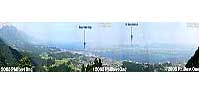
Panoramic view of Lake Biwa from Mt. Hiei.
|
|

Bus service is also available along Hiei-zan Driveway.
|
|
|

Hieda Shrine
|
|

Hieda Shrine 日枝神社
|
|

Inside Hieda Shrine 日枝神社
|
|

Wedded trees at Hieda Shrine
|
|
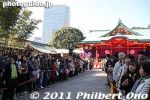
On Feb. 3, 2011, the annual setsubun festival was held at Hie Shrine at 11:30 am. People await the arrival of the people who will throw the beans.
|
|
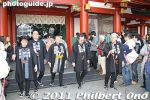
The setsubun procession arrives at the shrine.
|
|
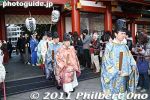
Hie Shrine priests.
|
|
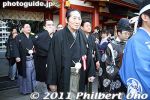
Sumo stablemasters Dewanoumi and Mihogaseki.
|
|
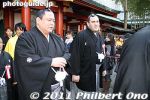
Sumo wrestlers including Aran.
|
|
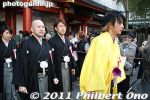
Yuusuke, a singer.
|
|
|
|
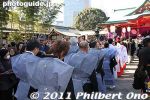
Proceeding to the shrine. First they had a ceremony.
|
|

They enter the shrine for the ceremony.
|
|
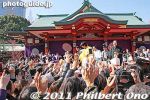
Mamemaki bean-throwing at Hie Jinja Shrine for setsubun.
|
|
|
|
|
|
|
|
|
|
|
|
|
|
|
|
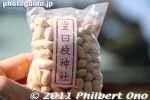
Hie Shrine's beans were tossed in little plastic bags with a paper label inside. Catching this one should bring me good luck this year.
|
|
|
|
|
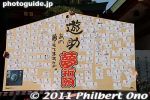
After the bean-throwing, a short show by singer Yuusuke was held.
|
|
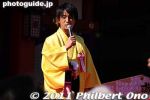
Yuusuke sings at Hie Shrine for setsubun. 遊助
|
|
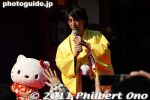
Hello Kitty also with Yuusuke. 遊助
|
|
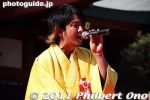
遊助
|
|
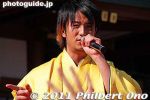
遊助
|
|

My video of Hie Shrine setsubun on Feb. 3, 2011.
|
|
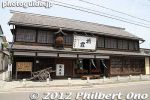
Poet Takamura Chieko's birth home. 高村 智恵子
|
|
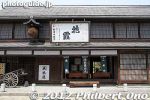
Poet Takamura Chieko's birth home. 高村 智恵子
|
|
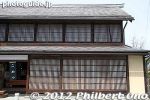
Poet Takamura Chieko's birth home. 高村 智恵子
|
|
|
|
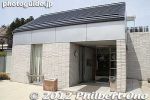
Small modern museum next to Poet Takamura Chieko's birth home. Exhibits art works by her and her husband Takamura Kotaro.
|
|
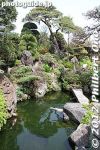
Japanese garden at poet Takamura Chieko's birth home. 高村 智恵子
|
|
|
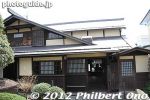
Poet Takamura Chieko's birth home.
|
|
|
|
|
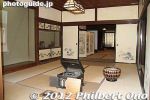
Inside poet Takamura Chieko's birth home.
|
|
|
|
|
|
|
|
|
|
|
|
|
|
|
|
|
|
|
|
|
|
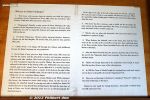
About Poet Takamura Chieko's birth home. 高村 智恵子
|
|
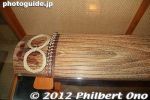
Samisen played by Chieko.
|
|
|
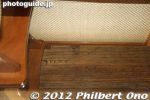
Signature under the samisen.
|
|
|
|
|
|
|
|
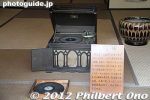
After visiting this home, I went to Nihonmatsu Castle (photos here).
|
|

Railway Museum highlight: The first locomotive used on Japan's first railway between Shimbashi and Yokohama in 1872. Imported from the UK, a Class 150 steam locomotive – No. 1
|
|

Class 150 steam locomotive – No. 1
|
|

Shinbashi Station sign
|
|
|
|